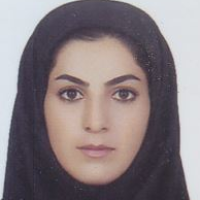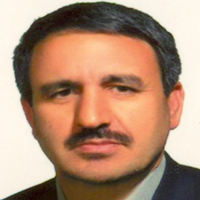Geochemistry and tectonic setting of plutonic rocks in Kalasur (west Kaleybar-NW Iran)
Author(s):
Article Type:
Research/Original Article (دارای رتبه معتبر)
Abstract:
Introduction
Based on field studies and petrography, two intrusive masses are exposed in the area. One of them has an acidic composition (granitoid rocks) and the other has an alkaline-intermediate composition (gabbroid rocks). Plutonic masses of Oligocene have penetrated in to the Cretaceous volcanic units. Therefore, in this research, an attempt is made to study the volcanic rocks and intrusive masses of the region in terms of geochemistry, petrogenesis, the genetic relationship of volcanic and plutonic massifs, as well as the tectonic environment of the location.Materials and methods
After field operations in the study area using aerial photographs and 1: 100000 maps of Varzeqan, samples were taken from the rocks of the area. 60 samples of low-altered rocks were collected from the area and used for petrographic studies and 13 samples were selected for chemical analysis by ICP-MS method.The selected samples were sent to Canada and analyzed in Actlabs Laboratory. Finally, using geochemical studies and field and petrographic studies, the magmatic series was determined and the data were analyzed and interpreted.
Results and discussion
This area, in the context of the structural subdivision geological zone of Iran, has been assigned to Western Alborz-Azerbaijan zone. The oldest rock outcrops in the area belong to the Cretaceous, which includes andesitic lava flow and plutonic masses in Oligocene which have penetrated in to the Cretaceous volcanic units. The composition of pluton is gabbro-diorite, diorite, quartz diorite, quartz monzodiorite, quartz monzonite, monzonite and granite. The essential minerals of intrusion include quartz, plagioclase, K-feldspar, biotite and amphibole with granular texture. The intrusion is through several dikes with diorite, micro-diorite, lamprophyre and aplitic composition. Enrichment of Pb, Th and U are related to mantle metasomatism and/or contamination by continental crust.
Negative anomalies of Ti, P and Eu can be related to the crystallization of ilmenite and apatite minerals in the primary stage of differentiation.
According to discrimination diagrams, the studied plutons were formed in the volcanic arc (VAG) and post collisional environment.
Conclusion
The Kalasurs intrusive complex, with Oligocene age, is located in SW of the Kaleybar city, NW Iran and in Western Alborz-Azerbaijan zone. The oldest rock outcrops in the area belong to Cretaceous, include andesitic lava flow and plutonic masses. Oligocene sub volcanic bodies have penetrated Cretaceous volcanic units. The plutons are gabbro-diorite, diorite, quartz diorite, quartz monzodiorite, quartz monzonite, monzonite and granite. These bodies are intruded by several dikes with diorite, micro-diorite, lamprophyre and aplitic composition. The studied samples are calc-alkaline, peraluminous to metaluminous and show I-type characteristics. The spider and REE diagrams’ fractionated patterns and high ratio of LREE/HREE, indicate that source magma could be generated from melting of garnet-lherzolite. According to discrimination diagrams, the studied plutons were formed in the volcanic arc) VAG) and post collisional environment.Keywords:
Language:
Persian
Published:
Journal of Earth Science Researches, Volume:12 Issue: 46, 2021
Pages:
124 to 139
magiran.com/p2307678
دانلود و مطالعه متن این مقاله با یکی از روشهای زیر امکان پذیر است:
اشتراک شخصی
با عضویت و پرداخت آنلاین حق اشتراک یکساله به مبلغ 1,390,000ريال میتوانید 70 عنوان مطلب دانلود کنید!
اشتراک سازمانی
به کتابخانه دانشگاه یا محل کار خود پیشنهاد کنید تا اشتراک سازمانی این پایگاه را برای دسترسی نامحدود همه کاربران به متن مطالب تهیه نمایند!
توجه!
- حق عضویت دریافتی صرف حمایت از نشریات عضو و نگهداری، تکمیل و توسعه مگیران میشود.
- پرداخت حق اشتراک و دانلود مقالات اجازه بازنشر آن در سایر رسانههای چاپی و دیجیتال را به کاربر نمیدهد.
In order to view content subscription is required
Personal subscription
Subscribe magiran.com for 70 € euros via PayPal and download 70 articles during a year.
Organization subscription
Please contact us to subscribe your university or library for unlimited access!






